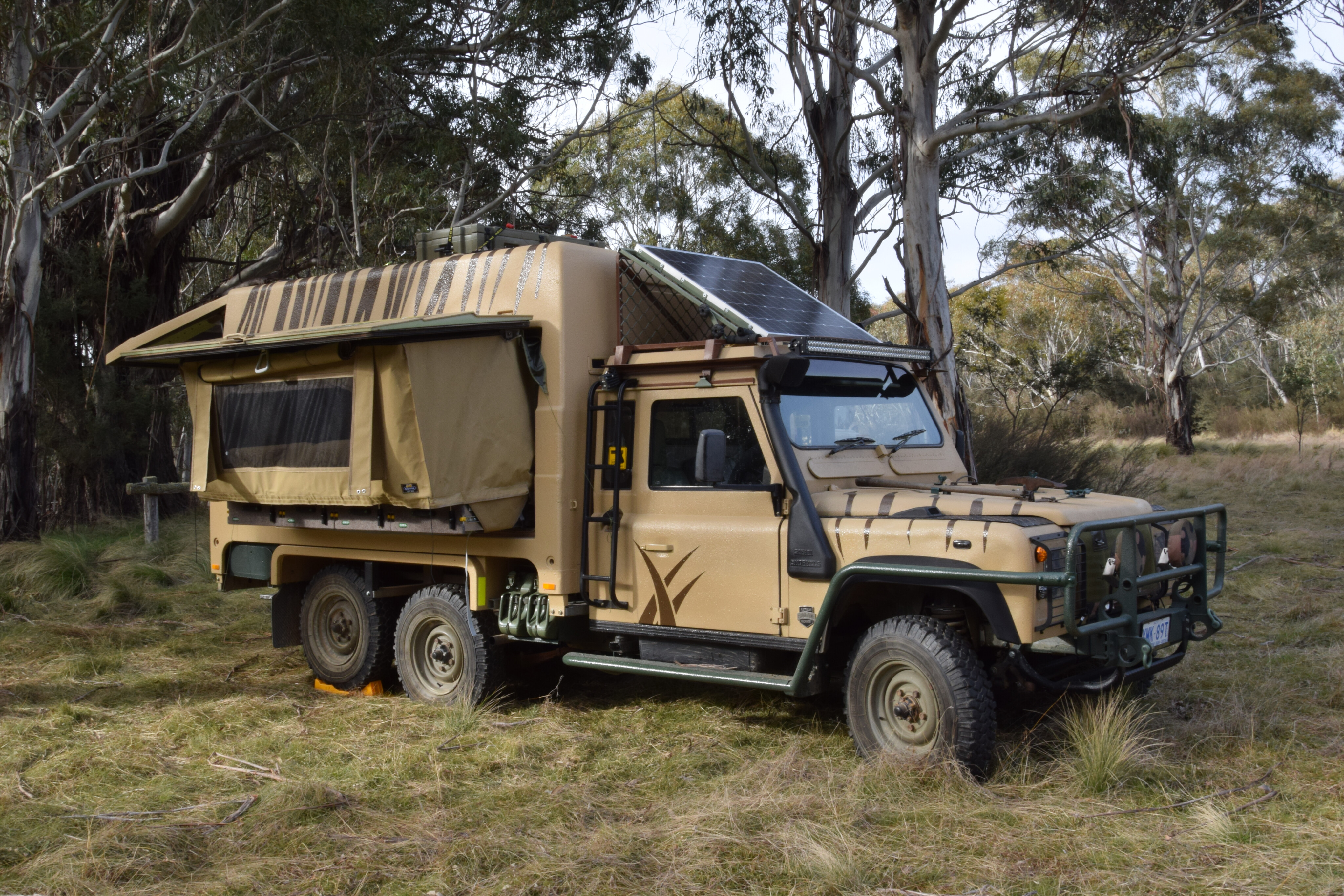
Purchasing an ex-Australian military 6x6 Land Rover 110 Perentie in 2018 went from an idea – to reality – in the space of around four months. For several years, we’d been watching Australian Frontline Machinery’s series of ex-military auctions. Every month, an eclectic mix of gear cropped-up inviting bids.
Included among these were the 4x4 and 6x6 variants of the ADF’s fleet of superseded Land Rover 110 Perenties.
Well over half of the 4079 Land Rover Perenties ever produced had already been sold through online auction since we’d been watching. While bidders routinely went gangbusters to secure 4x4 variants including the popular Regional Force Surveillance Vehicles, our sights were set elsewhere.
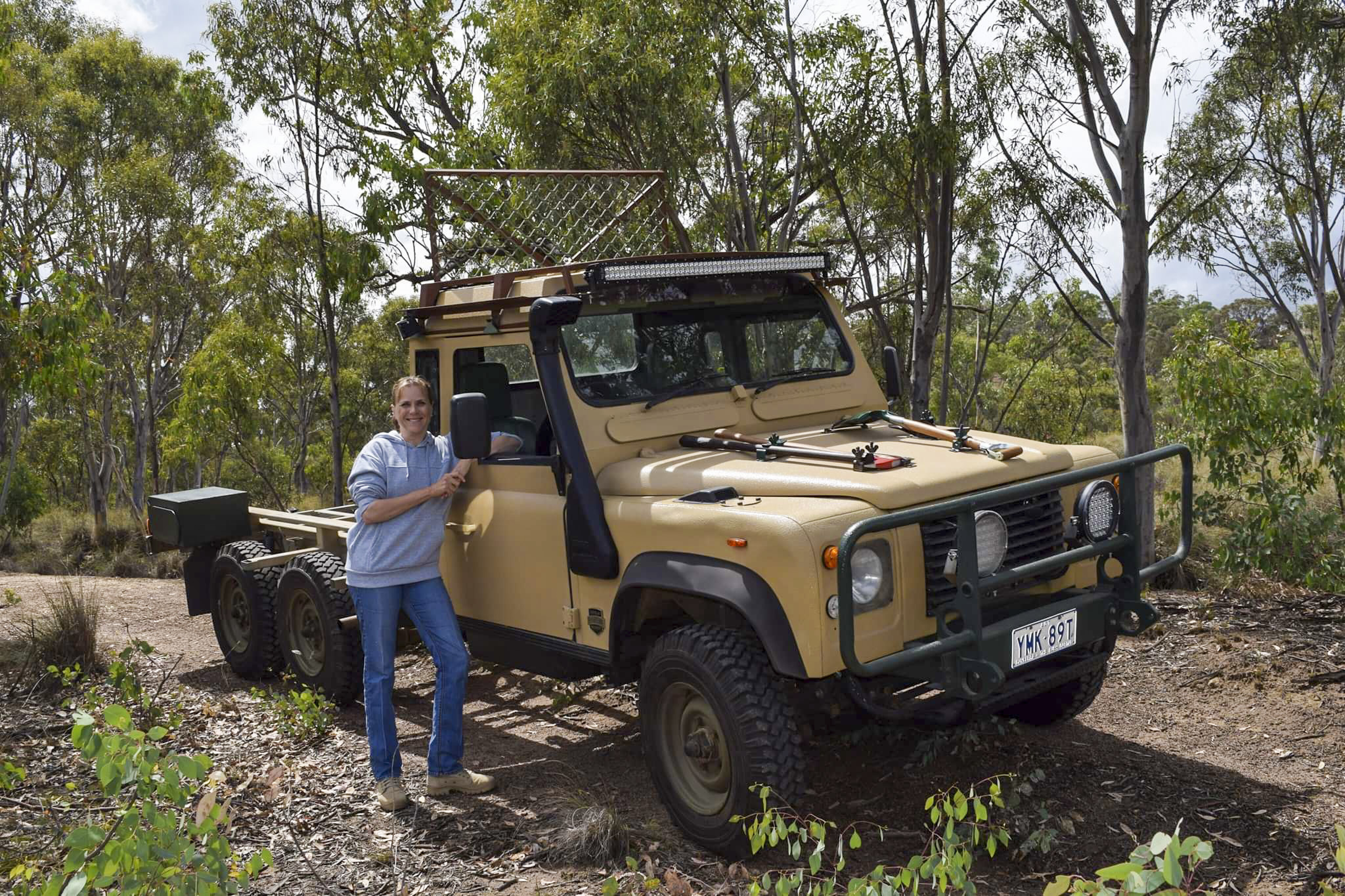
(Not so) tiny home
The Perentie 6x6’s potential as a go-anywhere mobile home was self-evident, whichever way you looked at it. The cargo version has an aluminium rear tray area covering a vast 6.55m² under the cover of a canvas canopy on a hoop frame, with drop sides and a tailgate. For a basic camper set-up, it takes little more than a custom slide kitchen, fridge, gas bottle, water tank, some swags and the job is done.
But then there are the ambulance and general maintenance vehicle (GMV) variants too. And it didn’t take much imagination to envisage the insulated fibreglass rear modular section being modified to become a full-blown all-weather camper.
Clearly, either of these modules were spacious enough to use for long-term living. They are, after all, big units. At a whopping 3m long, 2m high and 2.4m wide, the ‘canopy’ is big enough to hide a Suzuki Jimny! It’s wide because –even though it’s based on a 110 Land Rover – the 6x6 variant is set on a chassis that is 200mm wider than a standard 110.

Happily, the wider cabin fits three seats abreast; a situation that makes it perfect for our family trio. The GMV was particularly appealing because the rear ‘ambulance style’ door is supplemented by lift-up side doors (gull-wings) that are purpose-designed to stay open during rain events.
This set-up looked particularly suitable for camper-modification; offering better ventilation than the ambulance variant, as well as options to extend the floor plan beyond the width of the vehicle.
Exactly how to turn this cavernous space into a home away from home, however, was a challenge that would evidently take some time (and money) to resolve.
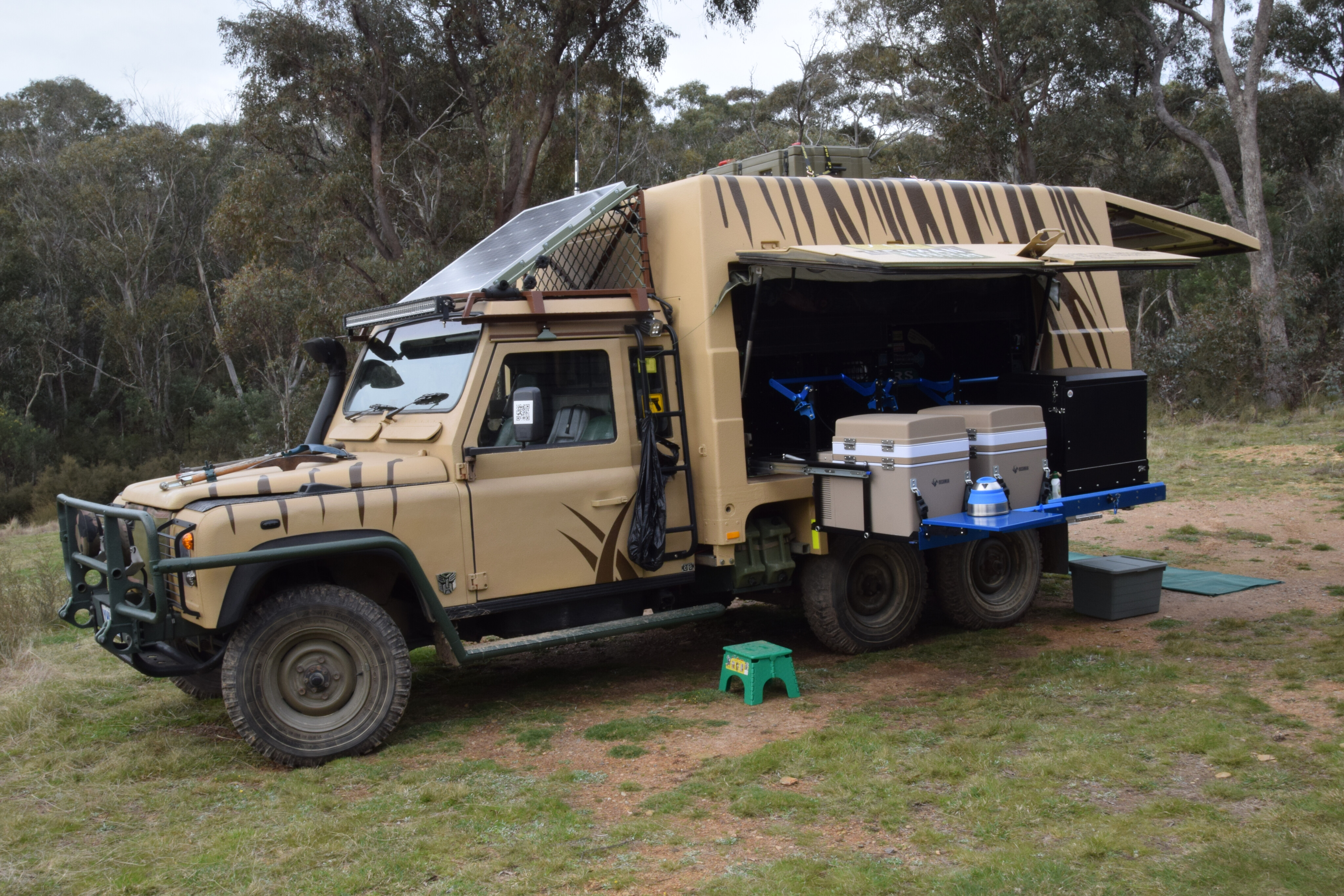
Home guard hero
Ultimately, we made a successful bid on a 1989 6x6 Perentie Cargo variant with a mere 21,000km on the odometer. The logbook told it all. Having spent the first 14 years of her life in war stocks, she was pulled out of storage in 2003 with just a few hundred kilometres on the clock.
In these languid years she was treated to all the modifications and upgrades the rest of the fleet enjoyed. This even included re-dipping her galvanised chassis and having the centre diff replaced at 19,000km, regardless that the logbook made no reference to the work actually being required. Perhaps it was just a case of the vehicle being given to the apprentice to work on!
Regardless, she was then assigned to the Joint Logistics Unit (the loan pool) where she spent a couple of years intermittently supporting military exercises.
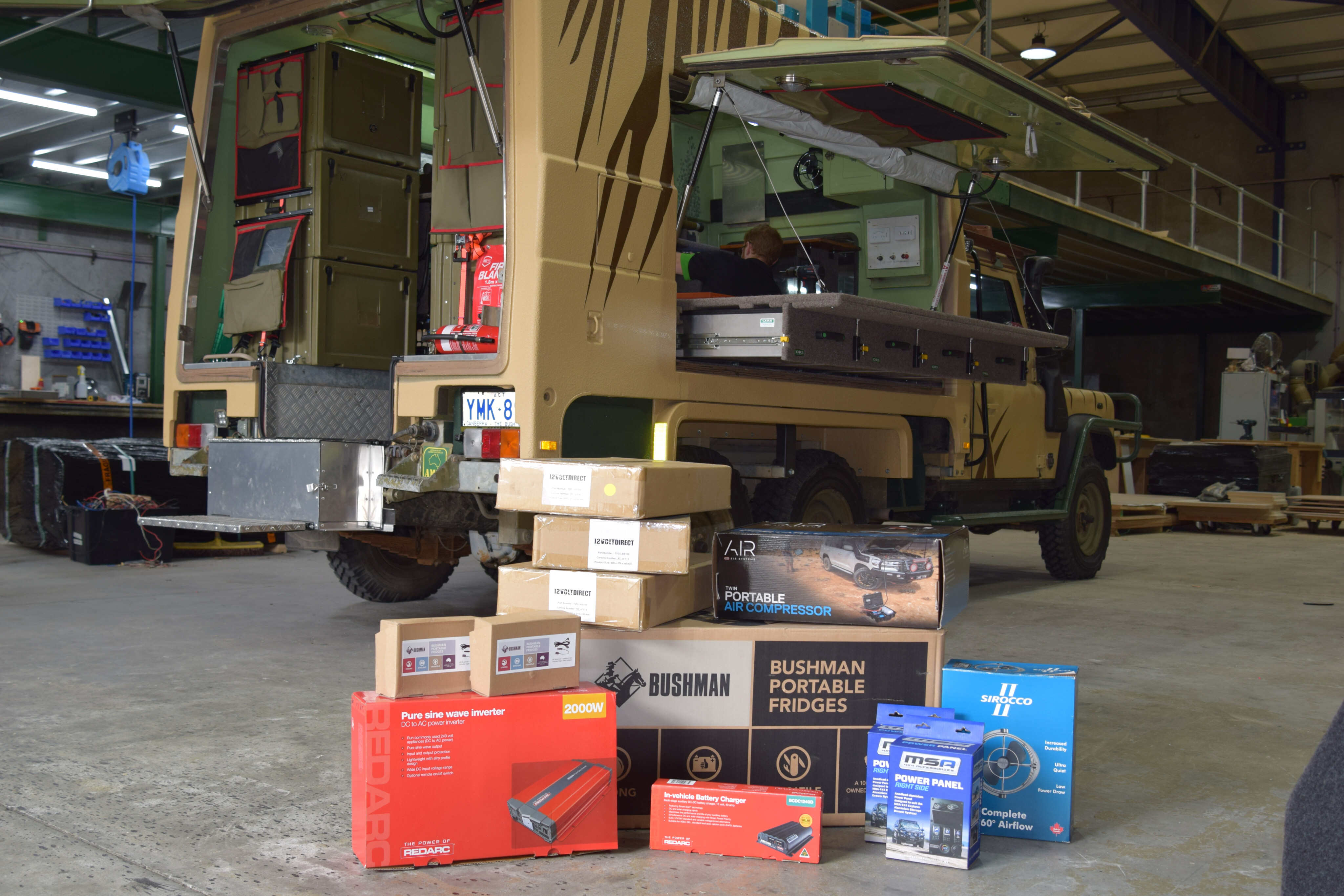
A couple of months after buying the Land Rover, we purchased a GMV canopy module separately. By having the module unconnected to the vehicle, we could readily access all component elements of both – and this would assist when it came to rewiring the 12/24/240/415V loom and preparing the module for its 12V camper conversion.
Further, as a Cargo variant, we knew that our Perentie had spent its military life carrying out relatively undemanding tasks like moving stores between military sites (largely on tarmac roads) or delivering camp kitchen meals to soldiers in the field.
By contrast, Perenties that saw service as GMVs were much more likely to have seen hard military service and over-loaded. And we didn’t need the added expenditure for new suspension, bushes, axles and the like. While there was evidently minor damage to the module, the cost of bringing it back-up to spec was likely to be far less than dealing with mechanical issues.

Tough truck
The rugged credentials of this 6x6 war horse are obvious from its specs. For starters, its two-tonne payload makes a big impression. With an unladen weight of 3660kg, it has a GVM 5660kg with an original towing capacity of 1500kg.To give it grunt, the diesel Isuzu 4BD1 3.9L 4-cylinder engine is turbo-charged with a Garrett model ATD-T25.
The integral diff in the transfer case permanently drives the front and intermediate axles: so that’s a 6x4 for daily operation. For difficult terrain, the diff can be manually locked, automatically engaging the rear axle too, which makes her a true 6x6 when needed.
While our rig led a sheltered existence in its early years, we intend to put it through its paces on some of Australia’s most remote outback tracks – conditions it was designed for in defence of the nation. So, the key focus of the conversion has always been on completing the camper component while ensuring the vehicle proper is mechanically, electrically and structurally sound.
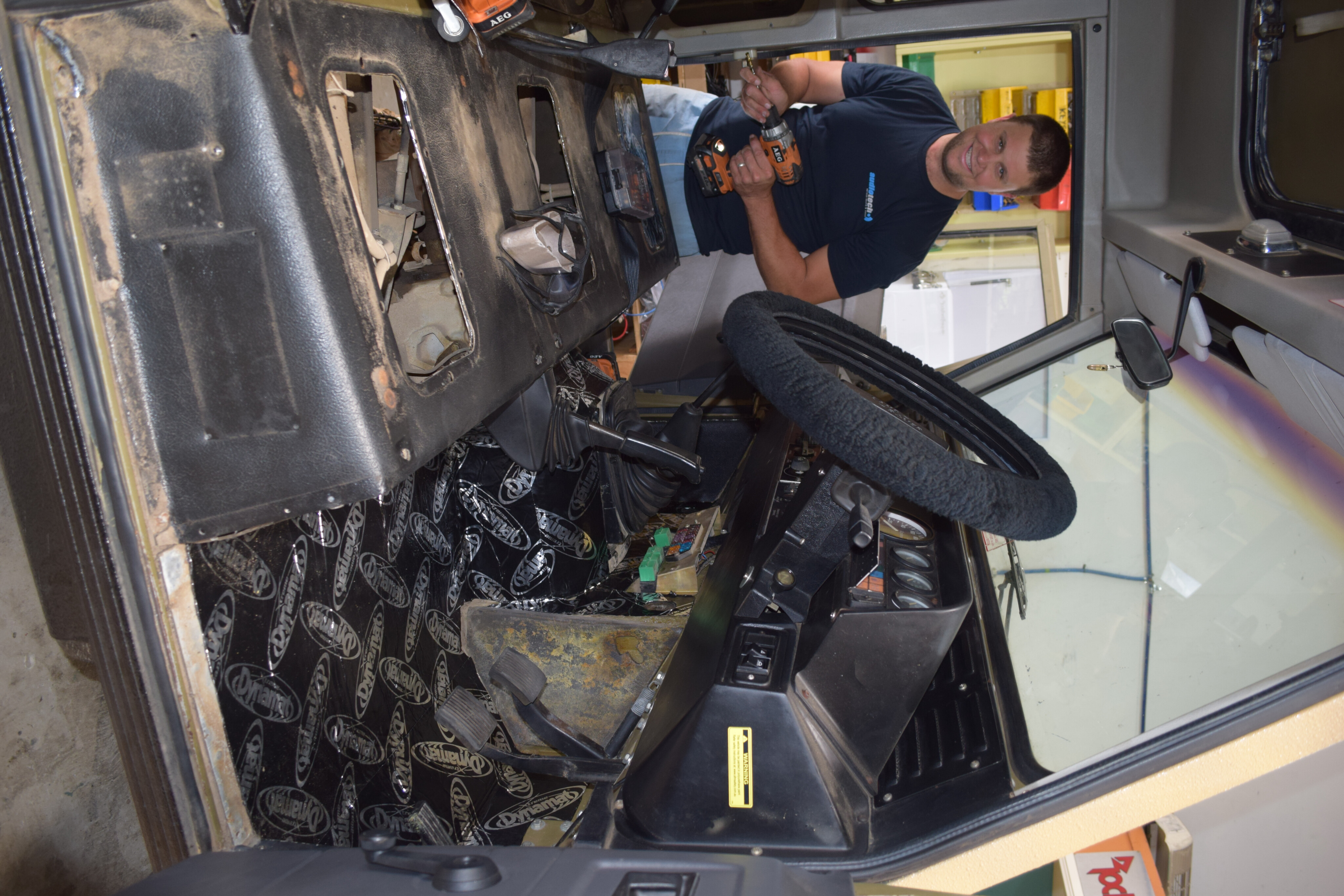
Notwithstanding that our Perentie has remarkably few kilometres under its belt, it’s still seen some field time. Importantly, it’s spent a lot of its life sitting in a vehicle-yard doing very little interspersed with hard times on exercise where soldiers treat vehicles like they stole them.
So, we’ve spent considerable time building relationships with trusted mechanics, electricians, steel fabricators and mechanical engineers to ensure our 6x6 Cold War veteran is still fighting fit.
All 6x6 Perenties come with a dual jerry can holder on the driver’s side. When we found a second holder, we installed it where the 24V battery box used to sit on the passenger side. With these four jerries, combined with the twin 62-litre fuel tanks, we’ll have a total capacity of 204L of diesel. That should get us over 1100km at 18L/100km which isn’t bad going for a 30yo truck with a kerb weight that’s now more than three times Hilux dual cabs.

Cash conversion
To support the vehicle now and into the future, we’ve acquired spares at auction that have been simply too cheap to ignore – or that are bespoke to the rig. These have included wheel rims, spare doors, brake booster assembly and a fuel pump.
We’ve focused too on acquiring spare axles. In addition to having a wider-wheel base than any other 4x4 Land Rover, the 6x6’s three axles all have a different configuration to cater for the PTO on the transfer case that drives the third axle via a vacuum clutch – and the extra off-centre prop shaft.
So, we’ve purchased two of each (second-hand) to provide us with the option to rebuild a broken axle or to furnish parts should we require them.
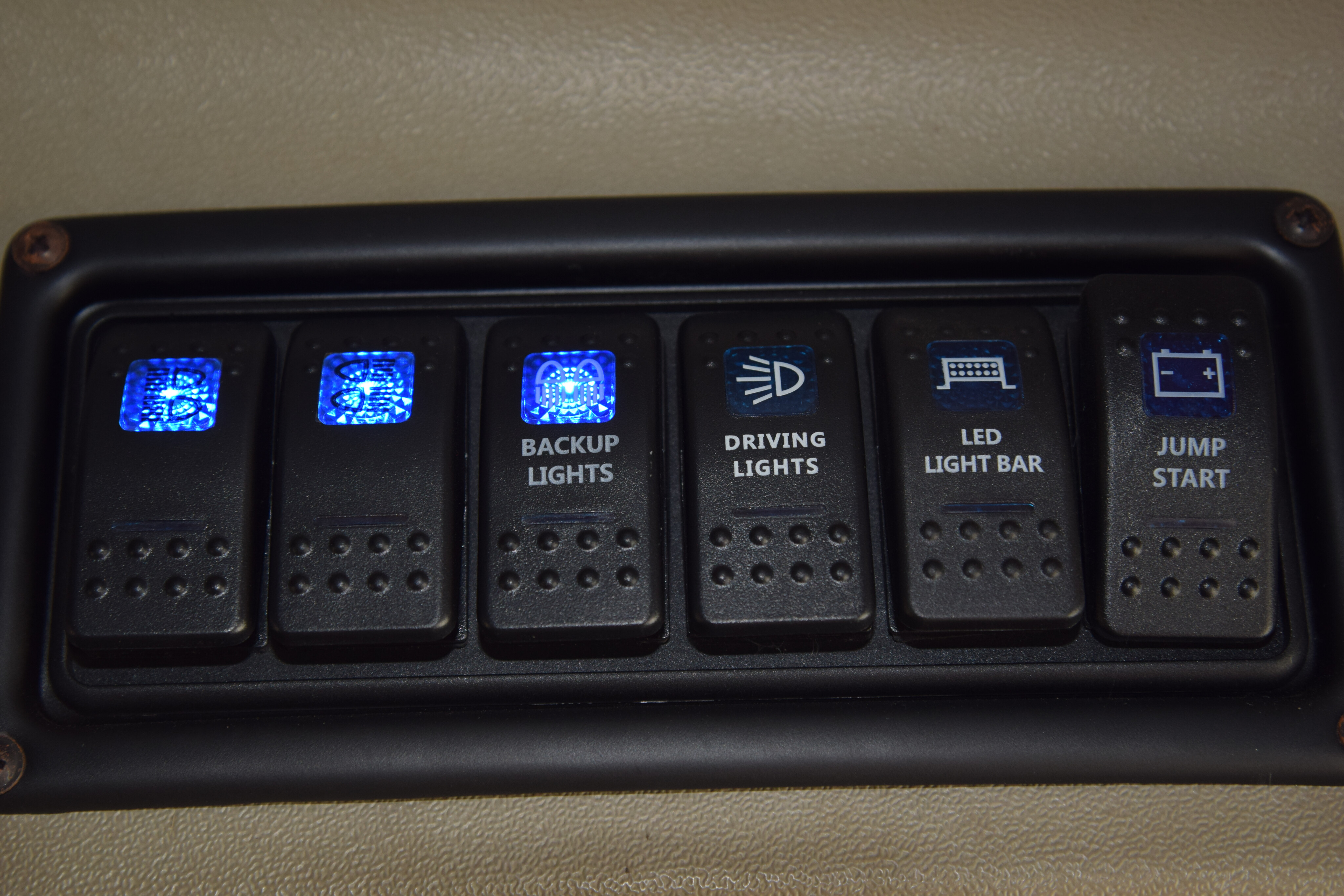
We’ve also added a military LT95A gearbox to our spares supply so that we’re not left trying to modify a civilian LT95 sometime down the track. Lucky for us, we have an old mate with a woolshed on his property the size of a supermarket to stash these spares away.
For the fit-out, we’ve relied on a combination of off-the-shelf purchases and repurposed military kit. A couple of trips to the UK to visit aging parents proved quite fruitful in this regard.
Returning home with odd-shaped excess baggage bursting with Land Rover accessories raised some quizzical looks from airport check-in staff. But it’s amazing how quickly you get moved along when you begin explaining to harried airport attendants that the surfboard sized package you’re trying to check-in contains ladders, bonnet protectors and air intakes for a Land Rover. Their glazed eyes say it all: “Just make them go away.”

Beyond the new gear, the rig’s military origins are reflected in the six ex-military ‘Pelican’ cases used for storing clothes and other supplies. And to keep our daughter comfy at night, there’s a Korean War vintage military ambulance stretcher, with a custom 75mm mattress, as a loft bed accessed via a handful of indoor rock-wall climbing holds.
While these aftermarket parts are integral to the camper conversion, much of the refit has involved custom fabrication that’s required a lot attention by skilled tradies. On the outside, the whole rig has been coated with ‘Speedliner’. This is a ute liner that’s 500 times stronger than its nearest competitor.
So, it will protect the vehicle’s outer surfaces against unnecessary wear and tear, with the added benefit of reinforcing the module’s 30-year-old fibreglass monocoque body. Besides, she’s not in the army anymore so she doesn’t have to look like she is.
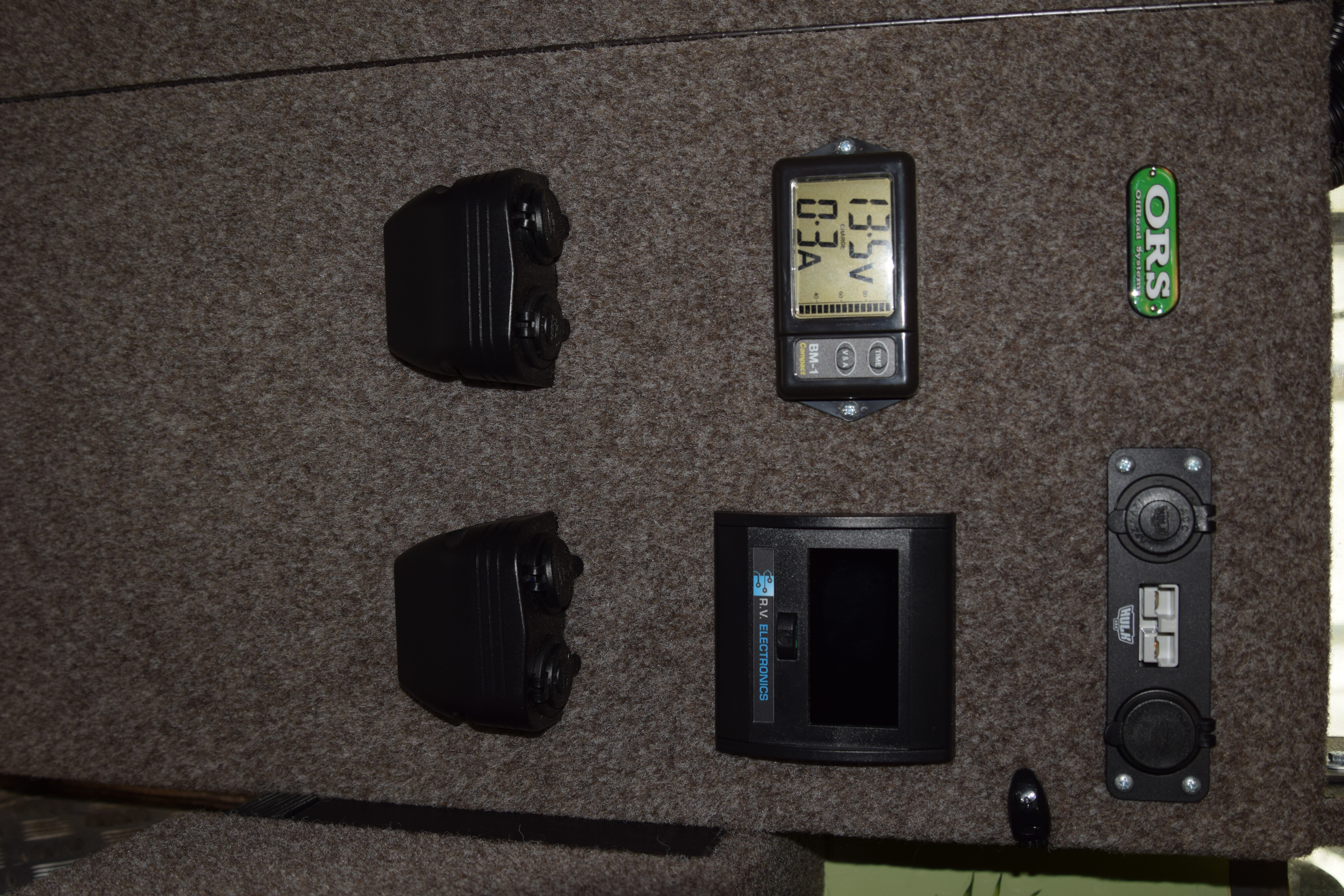
To cater for life on the road, inside there are three MSA fridge drop-slides carrying two Bushman fridges and a Top End Campgear Longhaul kitchen combined withan Ecoheat Induction cooktop, sockets, lights – the whole box and dice.
All this is powered by three 12V Direct slimline 100Ah lithium batteries, a Redarc Classic BCDC 1240D charger and Redarc 2000W inverter, and 400W of Redarc fixed solar panels with an additional input for a Redarc 190W SunPower solar blanket.
Custom cabinetry from ORS includes a four-drawer system that ingeniously supports a double bed when the internal lounge is folded down, a merbau work desk, electronics cabinet, storage racks and even a rock-climbing wall! There are also tie-down points to secure items that we pick up while we’re on the road, like boxes of wine and more Land Rover parts.
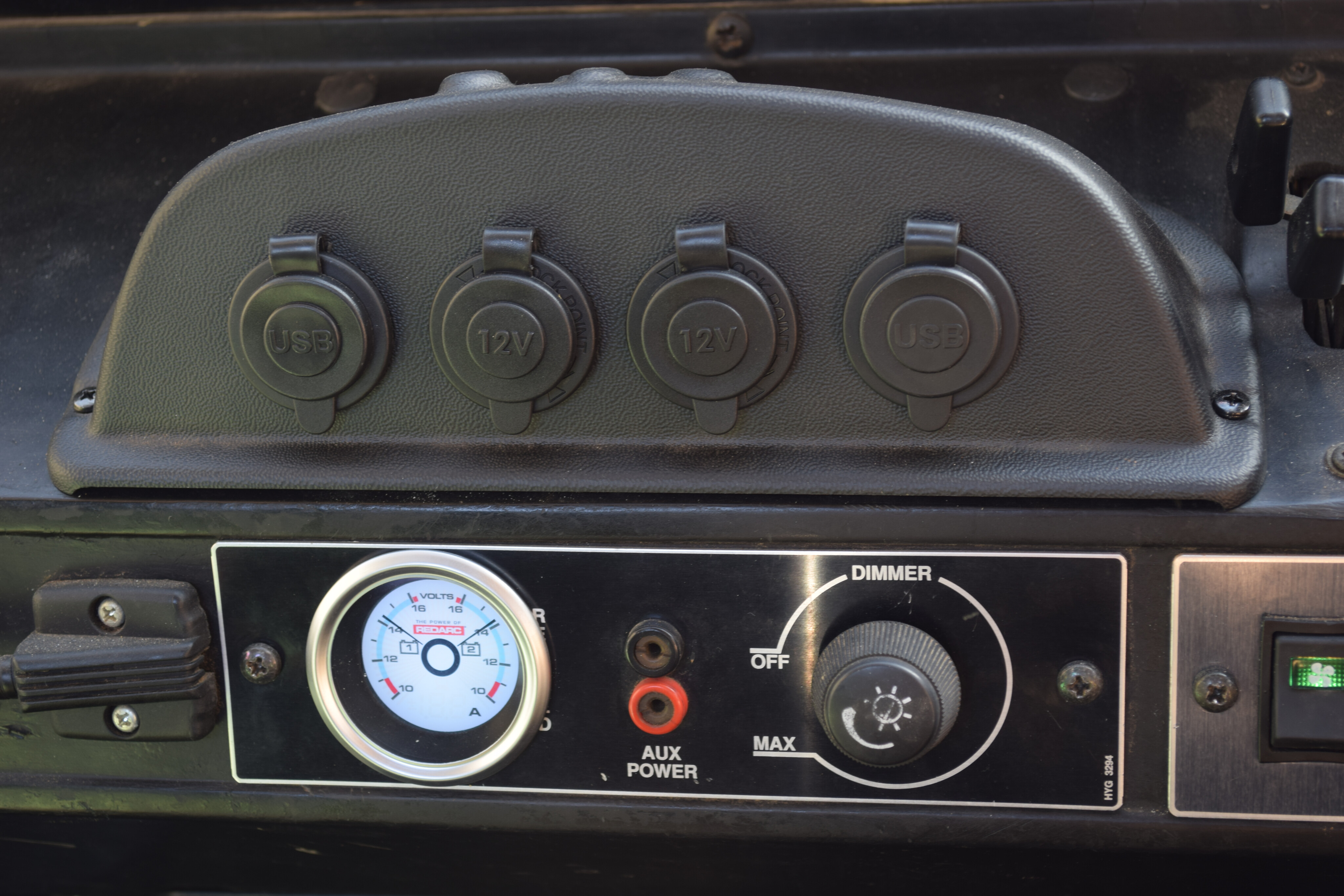
Beautiful beast
Five years on, and the camper conversion is ready to hit the back tracks.Ultimately, the shopping list for this custom refit proved to be eye-wateringly long – and like every build, further tweaks will be inevitable once we’ve spent some serious time on the road getting to know each other. But the result is absolutely magnificent, and totally unique. With only 185 GMVs ever made, ours is like no other.
It’s not often that you can aspire to having the best in life. But I’m sure, without a shadow of a doubt, that we own the best Land Rover 6x6 Perentie camper conversion in the world.
And the time to prove it is coming soon with Land Rover’s 75th Anniversary celebrations and showcase scheduled for Cooma, NSW, over the 2023 Easter weekend. We’ll be taking our Bug-Out-Vehicle. Will we see you there?
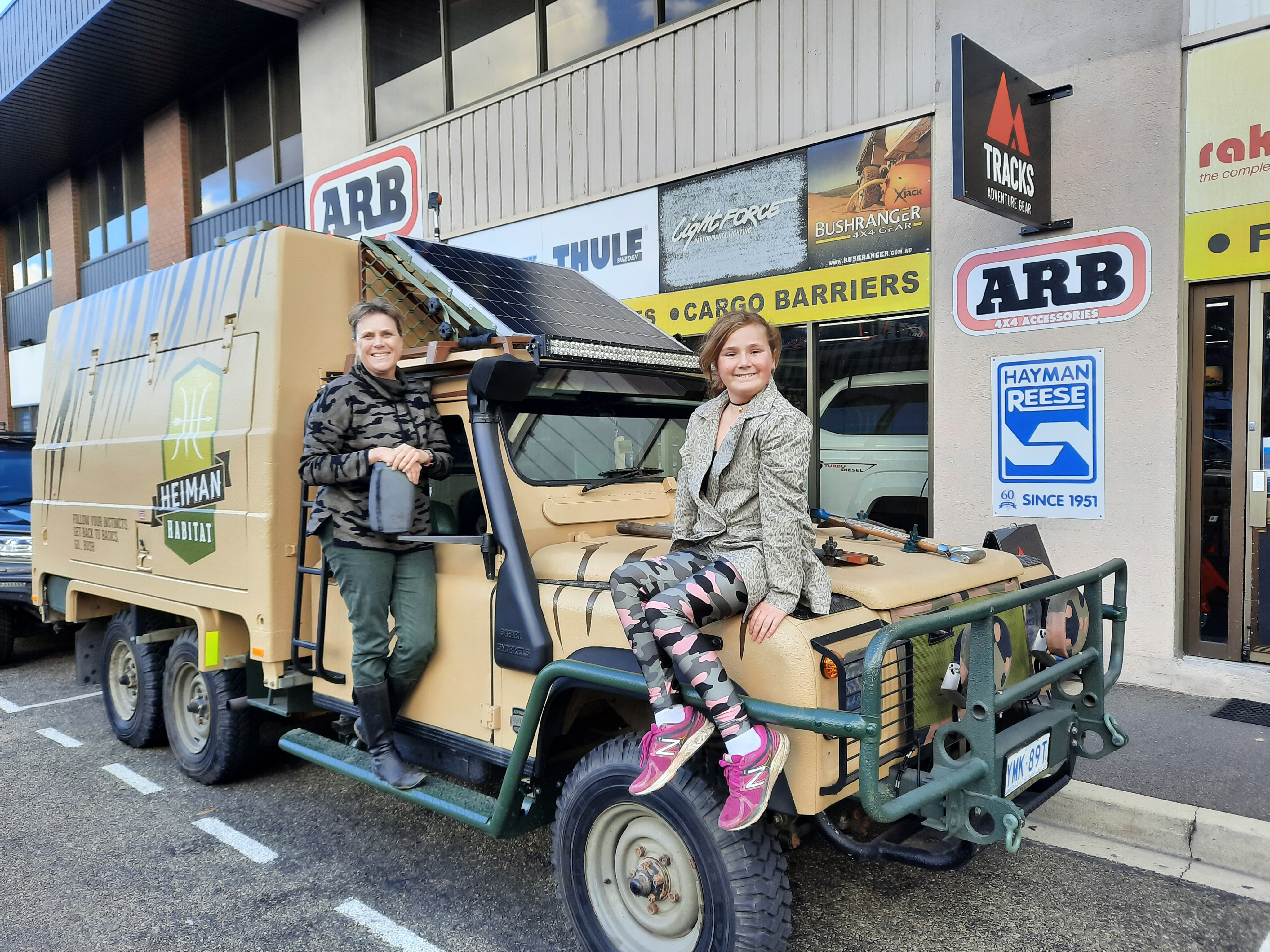
Major mods
| Bodywork | Speedliner ute-tray liner respray for cab and module |
|---|---|
| Safari Snorkel (for a 1989 LR County) | |
| Britpart wing air-intake scoops | |
| Modified ARB side steps | |
| Genuine Perentie LRPV brush rails | |
| Side-mounted twin Defender rear door access ladders | |
| Custom hinged solar roof rack to track the sun. | |
| Electrical | Redarc BCDC 1240D and 2000W inverter and dual-battery gauge |
| Dual-battery system in main cabin | |
| Rhree 12V Direct 100Ah slimline lithium in module | |
| Rwo 200W solar panels | |
| 190W Redarc SunPower folding solar blanket, Red Eye Lighting Twin 9-inch 1800 lumen spotties, 52-inch dual-row spot/flood combo LED bar and three 20W LED work lights | |
| Britpart LED headlight upgrade | |
| Mud Parts USB & 12V dash module. | |
| Comms and nav | GME XRS Connect Compact UHF CB radio, Sony Apple CarPlay Media Receiver tucked away in the overhead board and a HEMA HX-2 Navigator to show us the way. |
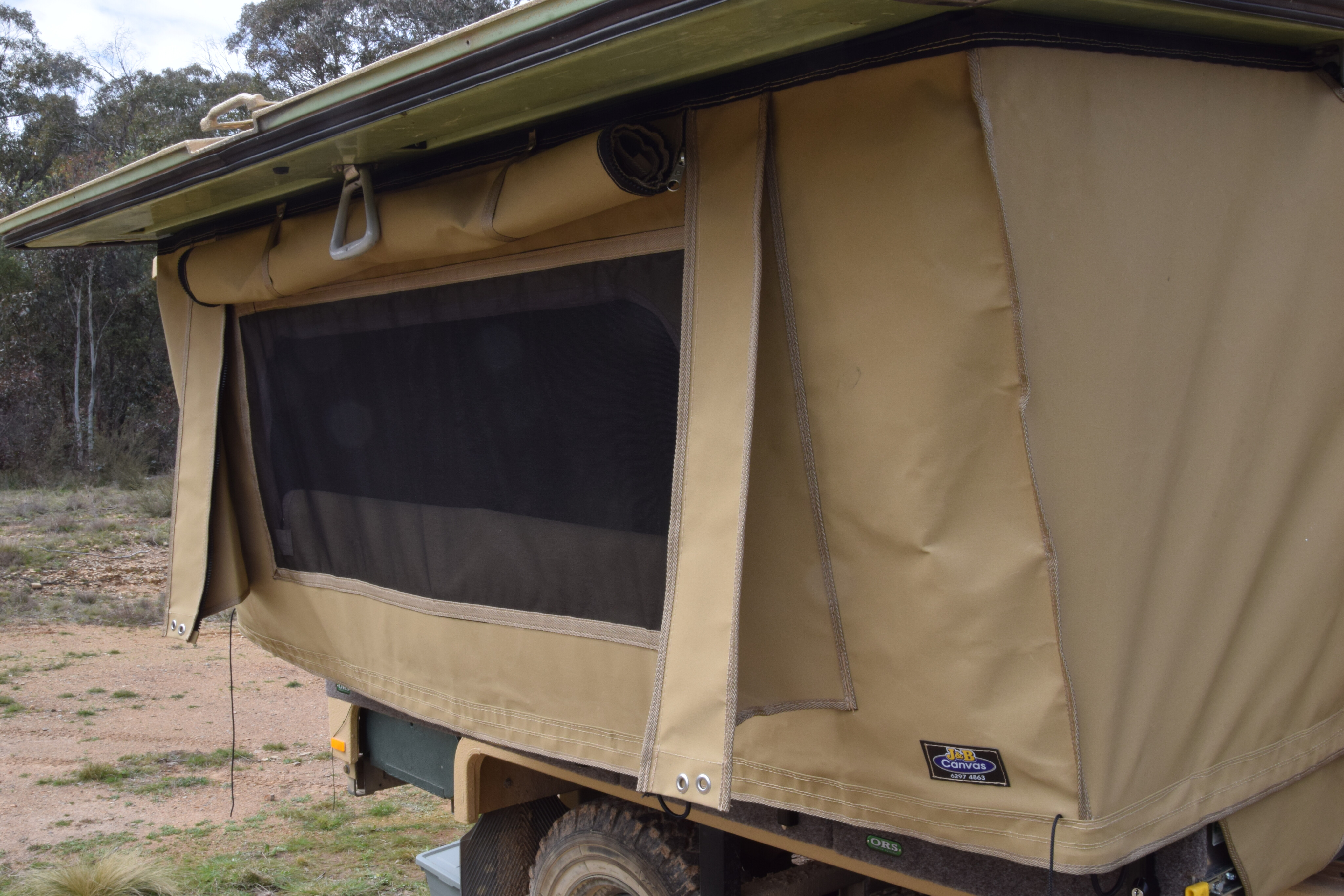
With many thanks
A camper conversion like this is not something you do all on your lonesome. So we’d like to give a shout out to the following 4WD and camping industry champions for helping us out along the way:
| Thanks to: |
|---|
| 12 Volt Direct |
| AudioTech |
| BritPart |
| Famous Four |
| JB Canvas |
| Off Road Systems (ORS) |
| Redarc Electronics |
| Roadway Mufflers & 4x4 |
| Semits Smash Repair |
| Snells Security and Electrical |
| Top End Campgear |
| Tough Gear Engineering |
| Tracks Adventure Gear |
| Wizard 4x4 |
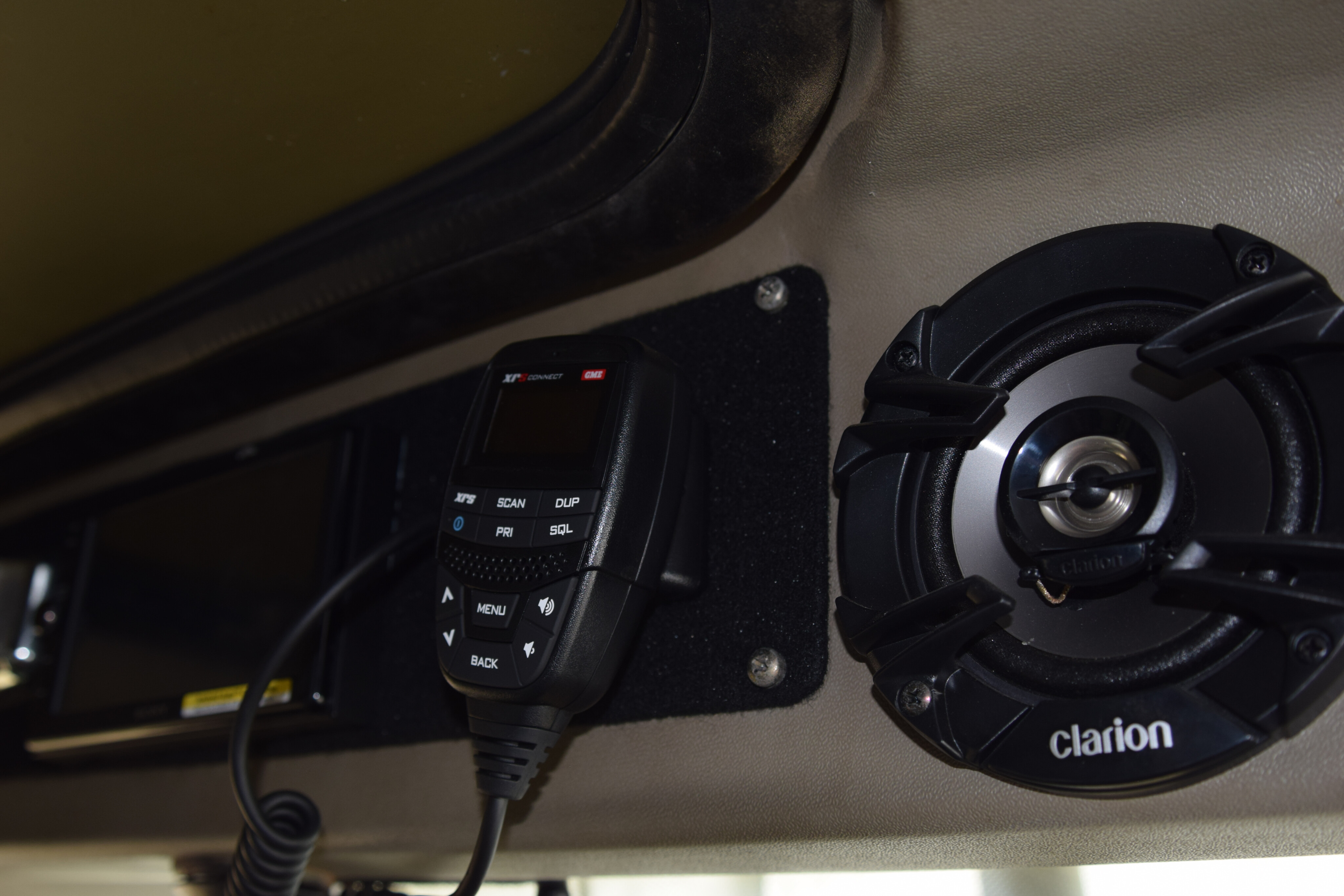
Project Perentie
Combining components of a Land Rover 110, with an Australian-made chassis and bespoke parts strong enough to handle the toughest conditions, the Perentie answered the ADF’s need for a replacement fleet of light trucks. So, why Perentie?
Readers may be aware that the Perentie (Varanus giganteus) is Australia’s largest lizard species. This monster reptile was reputed to be ‘strong, fast and uniquely designed for its environment’, all characteristics that Army wanted in its new fleet.
Having named the 1981 procurement project ‘Project Perentie’, the Perentie name soon fell in to common usage within the military.
Produced for the ADF by Jaguar Land Rover Australia between May 1986 and Sep 1992, and by BAeA under licence between 1996-98, the Perentie came in both 4x4 and 6x6 variants.
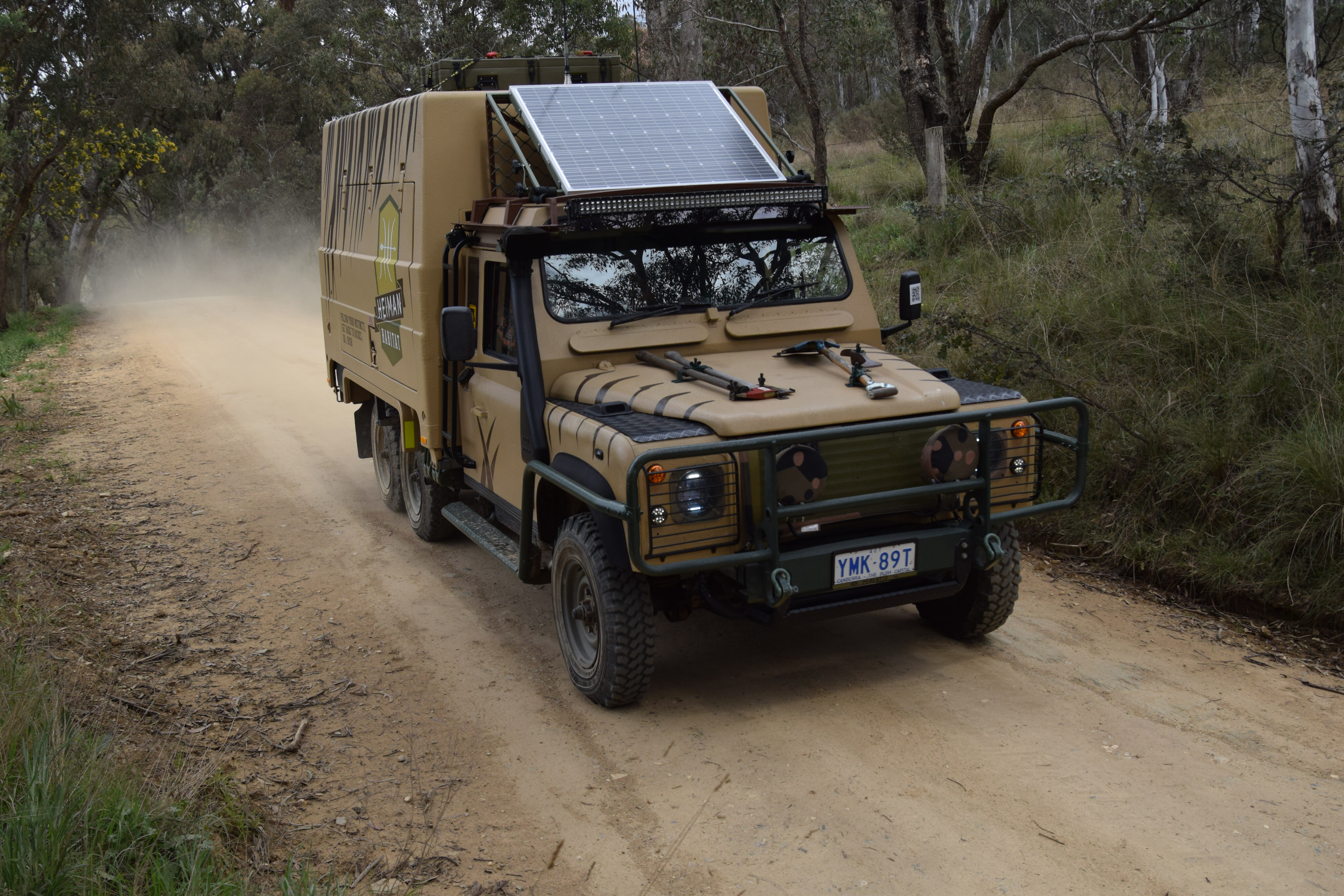
The 6x6 were made in eight variants, with three equipped with fully enclosed fibreglass rear bodies; the GMVs, ambulance and Electronic Repair Vehicles (ERVs). The fibreglass moulds for these were produced in Australia, initially by JAKAB Industries which had made its name from manufacturing fibreglass bodies for NSW ambulances.
These fibreglass modules offered far more usable space than had been available in, for example, the old 3 Series military ambulance. The extra width also meant the rig could be driven on to a tank transporter.
Ultimately, only 970 Land Rover 6x6 110 Perenties were ever made. Of these, 231 Cargo variants without winch were produced (like ours) with a further 185 GMVs manufactured. Extra fibreglass rear bodies were made between 2007-08 to replace modules like ours that were damaged through sustained usage.
Attribution
*Attribution: With thanks to REMLR for the vehicle data and Michael Cecil’s book ‘Tough Truck! Australian Army Land Rovers 1949-2012’ for excellent insights into the Perentie’s history.

COMMENTS